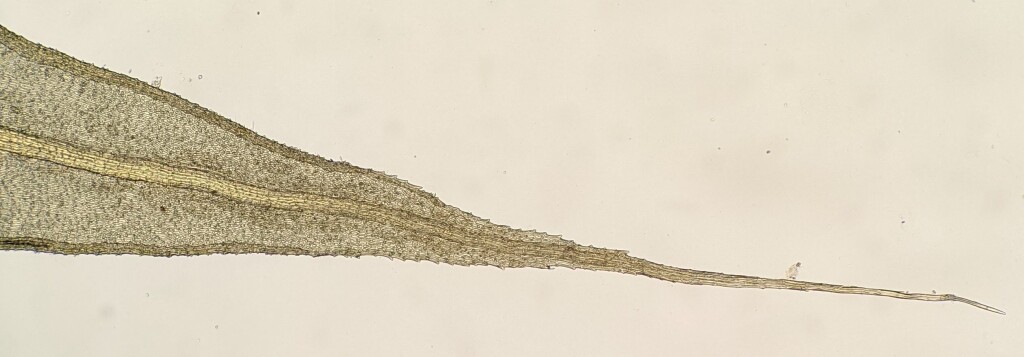Breutelia affinis
(Hook.) Mitt.Dioicous. Dense mats on rocks and soil. Stems 1–7 cm long, commonly branching toward apices, tomentose near base. Leaves erecto-patent when moist, erect and appressed to erect-spreading when dry, ovate-lanceolate, 1.7–3.8 mm long, 0.4–0.9 mm wide, deeply plicate at base; apices acuminate; costae long-excurrent, less commonly short-excurrent; margins dentate, recurved except at apex; apical and midlaminal cells rectangular, 6–40 μm long, 2–6 μm wide, papillose; basal cells linear 12–30 μm long, 3–5 μm wide, papillose; alar cells quadrate, enlarged, 7– 13 μm long, 7–13 μm wide, smooth, in 7–15 columns extending 30–40 cells toward apex. Setae 2–2.5 cm long, reddish-yellow. Capsules inclined or horizontal, rarely pendent, ovoid to cylindric, sulcate when dry, 2–2.5 mm long. Opercula conic.
MuM, Wim, GleP, VVP, VRiv, RobP, GipP, OtP, WaP, Gold, CVU, GGr, DunT, NIS, EGL, EGU, WPro, HSF, HNF, OtR, Strz, MonT, HFE, VAlp. New Zealand. Common and widespread throughout the northern slopes and foothills of the Great Dividing Range and south, with occasional occurrences in the north-west, usually in moist sites in sclerophyll forest, particularly along road cuttings, but occasionally in drier vegetation types such as mallee woodland.
 Spinning
SpinningGilmore, S.R. (2006). Breutelia. Flora of Australia 51: 256–262.


